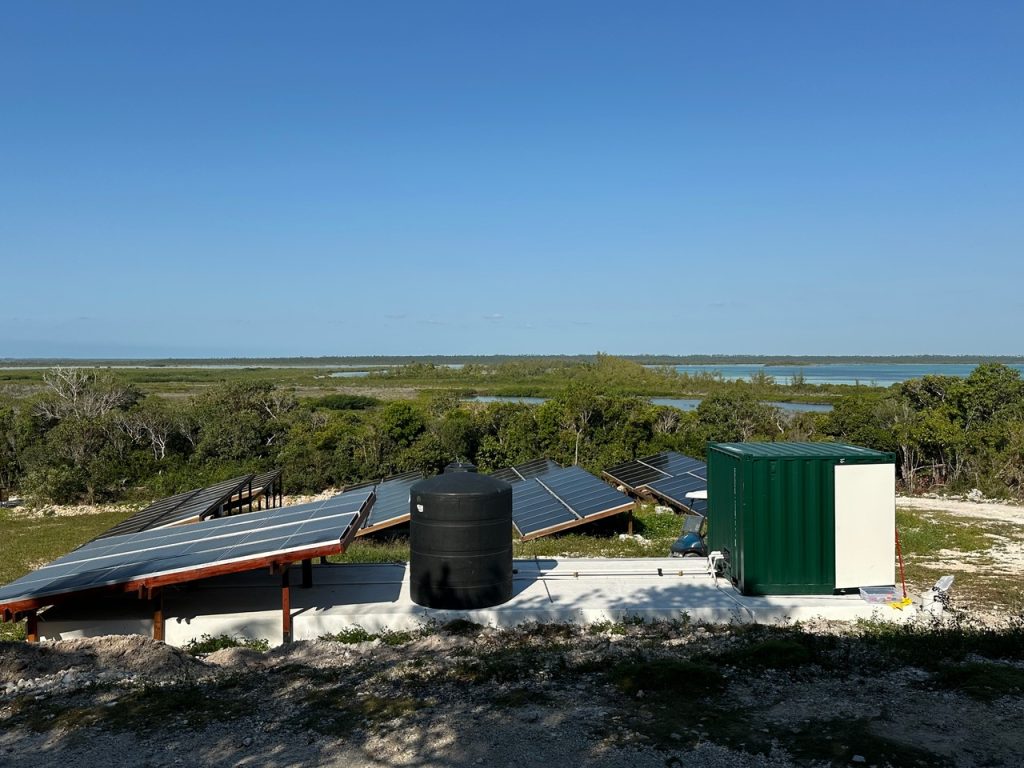Can Tokenization Unlock Sustainable Water? Hypercube, WaterLab, and Algorand Bet Big
The world is facing a water crisis that is expected to have a major impact on humanity in the coming years.
A report from the United Nations predicts that by 2030, global demand for water will exceed sustainable supply by 40 percent. The World Economic Forum further notes that terrestrial water storage decreased by almost 1.3 trillion tonnes between 2005 and 2015.
Blockchain For Solving Water Shortages
While it’s frightening to think that a water shortage may soon devastate the world, blockchain technology and cryptocurrency are being leveraged to solve some of these challenges.
Pietro Gorgazzini, managing director at Hypercube, told Cryptonews that with sufficient funds, virtually any region in the world could extract enough water from alternative sources to solve water scarcity.
“Over 70 percent of our planet is covered by water, so the common misconception is we have plenty, but only 2.5 percent of this is freshwater, and only a fraction of that is considered sustainable and renewable, therefore useful for human survival,” Gorgazzini said. “Hypercube is on a mission to prove that drinking water can be found from wastewater, the sea, the air, and even high depths.”
Gorgazzini elaborated that Hypercube has created a global water credit system to demonstrate how water can be used from alternative sources.
“Hypercube selects virtuous water facilities worldwide and conducts both remote and on-site audits through appointed third parties, making sure they fully comply with water credit protocol to qualify as originators,” he said. “We then connect flowmeters to our system through APIs, registering each cubic meter of water being reclaimed along with all relevant data on the Algorand blockchain, which serves as a public and immutable registry.”
The transparency that blockchain provides allows all parties to have access to the data generated by participating water facilities. In addition, for each cubic meter of water recorded, a “WTR token” worth an equivalent water credit is issued.
“Water-intensive companies can purchase WTR tokens and retire them—returning them irreversibly to redeem the equivalent water offset for their ESG reports,” Gorgazzini noted.
Funds from each transaction are also used to reward water facilitators of the underlying reclaimed cubic meters. Gorgazzini explained that these funds can be used to cover the cost of infrastructure, including audits, and fund new water initiatives in regions and communities that need it the most.
Although Hypercube was launched in April 2024, the company has already tokenized over 50 million cubic meters of reclaimed water. Gorgazzini hopes Hypercube will hit 100 million cubic meters by the end of the year.
“We’ve successfully onboarded some of the largest international NGOs, leading auditing companies, consulting firms, and all the relevant stakeholders needed to ensure global endorsement,” Gorgazzini shared.
He added that the most important achievement to date has been the current initiatives that wouldn’t have been possible without tokenization.
“For example, Hypercube enabled the full revamping of a wastewater reuse facility in northern Italy, which now processes over 7 million cubic meters per year,” he said.
Tokenization For Profitable Water Production
A project known as WaterLab is also using tokenization to generate freshwater by funding the deployment of water desalination systems.
Aaron Mandell, founder and CEO of WaterLab, told Cryptonews that he believes water is actually a limitless resource, yet most of it needs to be refined—or desalinated—before use.
Unfortunately, water desalination is often challenging and costly. In order to combat this, Mandell explained that WaterLab issues a tokenized water credit to fund the costs of desalination.
“We finance the desalination system by selling water credits, which are tokenized water contracts,” he said. “Each token is a contract for one unit of water (1 token = 1 m3). Water credits are generated by producers of water or desalination plants, which WaterLAB then tokenizes and sells to water holders.”
Mandell elaborated that water holders can be described as people who want to buy water purely as a financial hedge (like an oil future) or those who ultimately want to redeem their contract for the delivery of physical water.
WaterLab has currently deployed water desalination systems in the US, Nicaragua and in the Bahamas, where additional water is needed or there is limited infrastructure.
 WaterLab Water Miner. Source: WaterLab
WaterLab Water Miner. Source: WaterLab
“We have enough desalination capacity currently in operation to produce 1 million units of water (1M m3), which makes up the current supply of credits. We are also funding desalination research to further advance the technology,” Mandell remarked.
Crypto Donations For New Water Campaign
While blockchain and tokenization are solving water production challenges, crypto donations are currently being raised to bring clean water to 2 million people across five continents.
A creator-led fundraising campaign known as “TeamWater” was launched on August 1 and will run through the entire month of August. The campaign’s goal is to raise $40 million in just one month to fund long-term, community-driven water solutions.
Crypto donation platform The Giving Block is the official crypto partner behind TeamWater. Pat Duffy, co-founder of The Giving Block, told Cryptonews that as of August 4, the campaign had already raised over $2.7 million in crypto donations alone.
“This represents an impressive 40 percent of the total donation amount received so far. The crypto community is showing up in a big way to help drive this movement forward,” Duffy said.
Web3 Models Have Potential, But Challenges Remain
Although there is potential for blockchain and cryptocurrency to help solve the water crisis, a number of challenges may slow progress.
According to Gorgazzini, the biggest challenge from a business development perspective is that many traditional industries remain skeptical of Web3 models.
“Just mentioning blockchain can trigger concerns,” he said.
In order to overcome this, Gorgazzini believes that education is key. “We need to engage with stakeholders and policy makers early on.”
Mandell added that while the Web3 community is passionate about solving environmental issues related to water, many of these individuals remain well-versed in cryptocurrency, but not blockchain models.
“This also needs to change in order for the market to grow,” he said. “Web3 will be most impactful when it becomes entirely invisible—when individuals can buy water assets without realizing the profit is related to tokenization.”
También te puede interesar

Bluebird Mining secures Bitcoin funding as Philippine gold deal nears completion

Crypto VC funding: Crypto infra, AI stack up $159m in a shaky market
